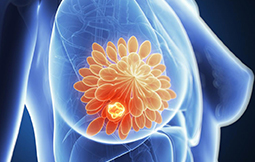
Breast cancer surgery is a key component of breast cancer usually the first line of attack against cancer. The treatment involves removing cancer with an operation. It may be used alone or in combination with other treatments, such as chemotherapy, hormone therapy, targeted therapy, and radiation therapy to prevent cancer from reoccurring in the breasts.
Breast cancer surgery is a key component of breast cancer usually the first line of attack against cancer. The treatment involves removing cancer with an operation. It may be used alone or in combination with other treatments, such as chemotherapy, hormone therapy, targeted therapy, and radiation therapy to prevent cancer from reoccurring in the breasts. Breast cancer has different surgery options that depend on many factors like the stage of cancer, the “personality” of cancer, and what is acceptable to the patient in terms of the long-term peace of mind.
Lumpectomy– In this surgery, the surgeon removes only a portion of the breast tissue. In some cases, even the lymph nodes around the armpits may be removed. It is a partial mastectomy because only a part of the breast tissue is removed. It conserves the breasts to an extent as much as possible. This generally takes place in women with small breasts or women with early cancer stages.
Mastectomy – Partial Mastectomy, is the removal of the cancerous part along with the healthy tissue around. Whereas lumpectomy is technically a form of partial mastectomy, more tissue is removed in partial mastectomy than in lumpectomy. Total Mastectomy is the removal of the entire breasts along with the nipples, areola, and sentinel lymph nodes. By opting for a total mastectomy, there are fewer chances of reoccurrence.
There may not be any specific indications of breast cancer but finding breast cancer as early as possible gives you a better chance for a successful treatment. Some screening tests are done to discover if there’s breast cancer or not. However, it’s not necessary that a mammogram can find every cancer, and thus, in order to identify cancer’s presence in the lymph nodes, a sentinel lymph node dissection is conducted. The most common symptoms of breast cancer may include: A painless, hard mass that has irregular edges is more likely to be cancer, but breast cancers can be tender, soft, or rounded.
Before your surgery, you will have few sittings with your doctor and you will be asked to decide whether you will opt for a lumpectomy or mastectomy which is one of the biggest decisions you will have to take in consultation with your doctor. Your doctor will then consider few things before directly moving on to surgery and if your cancer has spread to an advanced stage and to more than one area in the breast, a mastectomy is the only option left. If cancer is an early stage and some parts of the breast can be retained, a lumpectomy can be done instead. Your doctor might advise you for a mastectomy if there are chances for cancer to reoccur. If lumpectomy is done and only one breast is affected it may become smaller than the other. Patients can opt for breast reconstruction surgery after cancer surgery.
Before your surgery, your doctor will recommend a certain test to check your overall health and monitor cancer’s presence in the breasts. Some of the common tests include:
Once the test will be done your doctor will also explain to you the process and mark the area of operation. Patients are not allowed to eat or drink for a few hours before the surgery. Smoking is also strictly prohibited during this time.
Once the pre-procedure of the surgery is finished the patient will be admitted to the hospital. The First step of the surgery is giving anesthesia to the patient and a team of surgical oncologists then perform the operation at a breast cancer hospital. The anesthesiologist will try to keep you comfortable and safe throughout surgery to avoid postoperative pain and nausea. A pathologist then examines the tissues removed from the body and provides instant information to the surgeon to facilitate optimum removal of the tumor so that the patient doesn’t have to undergo multiple surgeries.
Post-surgery the patient is given several pain-killers to reduce the operative pain and a rehabilitation therapist works with the patient to help her regain her strength. Depending on the nature of the surgery, the patient may have some drain tubes near the wound which collect blood and fluids from the surgical wounds. Post a lumpectomy, the patient might have to stay for 1 or 2 days and in the case of a mastectomy, the patient might have to stay a day or two extra in the hospital.
There are also risks and complications which you will be told before the surgery so that you can take an informed decision.
Risks during Surgery:
Post-Surgery Complications
Copyright © 2025 IMA | All Rights Reserved.